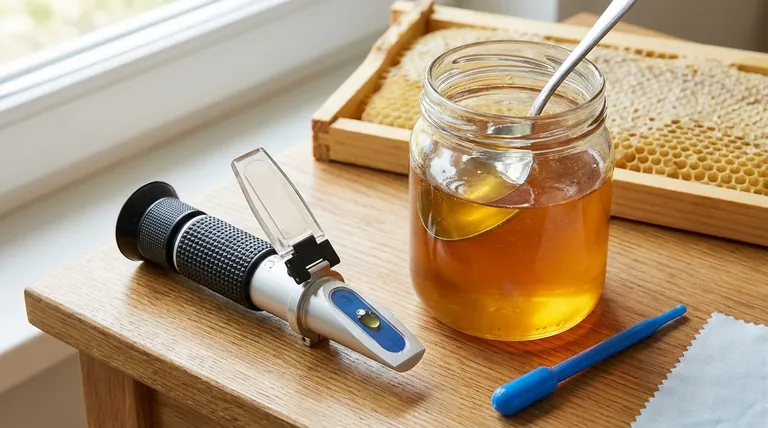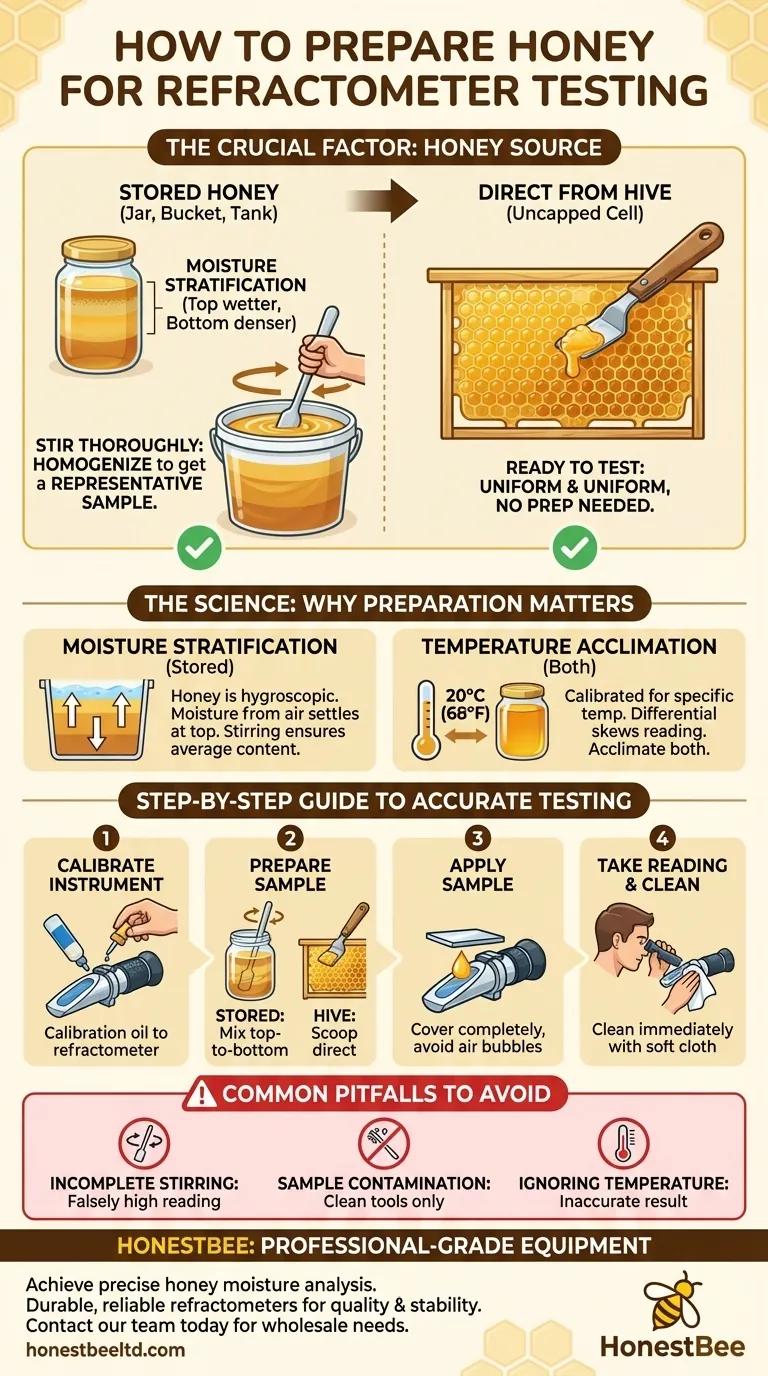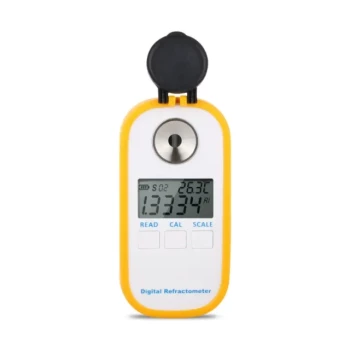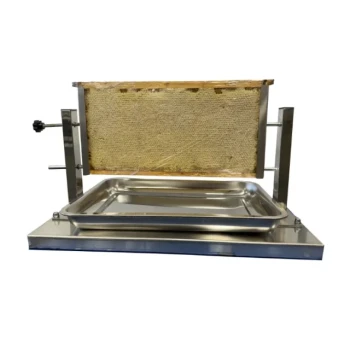To ensure an accurate test, your honey preparation depends entirely on its source. If you are testing honey directly from an uncapped cell in the hive, it is ready for immediate testing. However, if the honey has been extracted and stored in any container, such as a jar or bucket, you must stir it thoroughly before taking a sample.
The single most critical factor for accurate honey refractometer readings is ensuring your sample is truly representative of the entire batch. For stored honey, this means you must always stir it first to counteract moisture stratification and get a reliable measurement.

The Principle of Accurate Measurement
The goal of testing is to determine the water content of the entire batch, not just a small, unrepresentative portion. Two factors—homogeneity and temperature—are fundamental to achieving an accurate reading.
Why Stored Honey Requires Stirring
Honey is hygroscopic, meaning it can absorb moisture from the air. In a sealed but partially filled container, this moisture can accumulate at the top surface.
Over time, this creates moisture stratification, where the honey at the top has a higher water content than the denser, drier honey that settles at the bottom.
Testing only the top or bottom will give you a dangerously misleading reading. Thoroughly stirring from top to bottom homogenizes the honey, ensuring your sample reflects the true average water content.
The Exception: Testing Directly from the Hive
When you take a sample directly from an uncapped honeycomb cell, the honey is generally uniform. It has not had time to separate or absorb significant atmospheric moisture.
Therefore, honey tested straight from the comb does not require any stirring or prior preparation.
The Importance of Temperature Acclimation
Refractometers are calibrated to work at a specific temperature, typically 20°C (68°F). A significant temperature difference between the honey and the refractometer's prism will skew the reading.
For best results, allow both the honey container and the refractometer to acclimate to the same ambient room temperature before you begin testing.
A Step-by-Step Guide to Honey Testing
Following a consistent workflow is key to reliable results. Preparation is the first and most vital part of this process.
Step 1: Calibrate Your Refractometer
Before any test, always calibrate your instrument. Most honey refractometers use a special calibration oil with a known refractive index. This step ensures your baseline is correct.
Step 2: Prepare the Honey Sample
If the honey is in a jar, bucket, or tank, use a clean spatula or rod to stir it thoroughly, making sure to mix from the bottom to the top.
If testing from the hive, use a clean hive tool, toothpick, or spoon to scoop a small amount of honey directly from uncapped cells.
Step 3: Apply the Sample
Place a small drop of your prepared honey onto the refractometer's glass prism. The goal is to cover the prism completely without a large excess that could spill.
Gently lower the cover plate and wiggle it slightly. This helps spread the honey into a thin, even layer and removes any trapped air bubbles, which can interfere with the reading.
Step 4: Take the Reading and Clean Up
Look through the eyepiece and focus the scale. The reading is taken where the boundary line between the light and dark areas crosses the water percentage scale.
Immediately after you are finished, clean the prism and cover plate with a soft, damp cloth and dry it completely. Storing a dirty refractometer will damage it and ruin future readings.
Common Pitfalls to Avoid
Mistakes in preparation are the primary cause of inaccurate honey moisture readings. Being aware of these common errors is critical.
The Risk of Incomplete Stirring
This is the most frequent mistake. Simply dipping a tool into the top of a large bucket and testing that sample is not sufficient. This often leads to a falsely high moisture reading, causing a beekeeper to wait unnecessarily to harvest.
The Danger of Sample Contamination
Always use a perfectly clean and dry tool to collect your honey sample. Any water, debris, or wax on the tool will be transferred to the sample and alter the reading, invalidating your test.
Ignoring Temperature Differences
Testing cold honey from a cellar with a warm refractometer kept indoors will produce an inaccurate result. Always let both the instrument and the sample reach a stable, shared temperature before testing.
Making the Right Choice for Your Goal
Your testing strategy should adapt to your specific objective.
- If your primary focus is determining harvest readiness: Test honey from several uncapped frames across the super, as honey does not ripen uniformly. A representative average is more important than a single, perfect reading.
- If your primary focus is preparing a bulk tank for bottling: Thoroughly stirring the entire tank from top to bottom for several minutes is non-negotiable. This ensures the entire batch meets the quality standard for sale and long-term stability.
- If your primary focus is checking stored honey for quality: Always stir the entire jar or container completely before taking a sample, as moisture will inevitably accumulate at the top surface over time.
Proper preparation is not an optional step; it is the foundation of a meaningful and trustworthy honey analysis.
Summary Table:
| Preparation Step | For Stored Honey (Jar/Bucket) | For Honey Directly from Hive |
|---|---|---|
| Stirring Required? | Yes, stir thoroughly to prevent moisture stratification. | No, honey is uniform and ready to test. |
| Temperature Check | Let honey and refractometer acclimate to room temperature (20°C / 68°F). | Let honey and refractometer acclimate to room temperature. |
| Goal | Get a representative sample of the entire batch. | Get a reading from a specific frame/cell. |
Achieve precise honey moisture analysis with professional-grade equipment from HONESTBEE.
Whether you manage a commercial apiary or distribute beekeeping supplies, accurate moisture testing is critical for honey quality and stability. HONESTBEE supplies durable, reliable refractometers and other essential beekeeping equipment through our wholesale-focused operations.
Let us help you ensure every batch meets the highest standards.
Contact our team today to discuss your equipment needs and secure the right tools for your operation.
Visual Guide

Related Products
- Precision Honey Refractometer Instrument for Quality Assessment
- Digital Honey Refractometer for Precision Measurement of Optimal Honey Quality
- HONESTBEE 3-Frame Manual Acrylic Honey Extractor
- 8-Frame Electric Self-Reversing Honey Extractor Spinner for Commercial Honey Extraction Equipment
- Honey Concentrating Vacuum Heating Thickening Machine Dehumidifier for Honey
People Also Ask
- What is a honey refractometer and what is its purpose? Ensure Honey Quality and Prevent Spoilage
- What is a honey refractometer? The Essential Tool for Perfect Honey Quality
- What are the benefits of using a Pocket Digital Honey Refractometer? Achieve Precision & Speed in Honey Quality Control
- Why is a honey refractometer essential for honey harvesting? Protect Your Harvest from Spoilage
- Why is a honey refractometer considered essential for commercial beekeepers? Ensure Honey Quality and Profitability



















